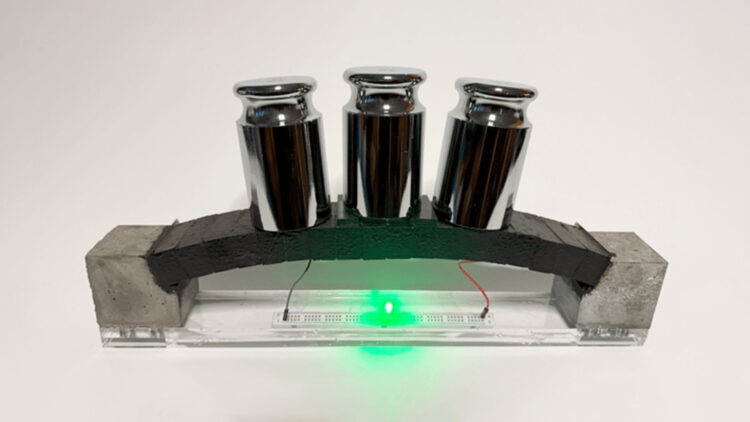The promise of sustainability is taking research to another level. This month’s MIT Research and Action newsletter proposes the ec³ battery: a concrete that can hold buildings and bridges, while storing energy. This new technology is being developed in the United States, and it’s supposed to have a life 10 times longer than ion-lithium batteries.
It works as a supercapacitor, capable of charging and discharging fast and efficiently. The secret is conductive cement, water, and one carbon electrolyte that forms an electric nanogrid. This way, the material becomes distributed energy storage, ready to capture renewable energy in common structures.
Besides the great performance, this is a project that promises sustainability, carbon capture, and a smart infrastructure that, if it works in big masses, will reduce the dependence on China by giving the U.S. energy independence.
How does the system work?
The conducted network created by cement, water, and a carbon electrolyte, as mentioned before, stores and releases energy like a supercapacitor. A recent research has multiplied the capacity by ten, putting the ec³ battery very close to a big-scale energy storage, working rapidly and durably. Since the electrolyte integration happens in the initial mixing and with no additional post-curing, it maintains known constructive processes.
Trials with electrolytes coming from seawater and industrial solvents achieved more dense and uniform configurations, which increase the performance (and sustainability).
The capacity grows along with the volume; slabs, walls, or bridge boards transform into nodes that absorb renewable energy excess and give them back when it’s needed because the electroactive element is the structure itself.
The goal would be to create many local storage units connected as smart infrastructure and electrical nanogrids.
From buildings to the grid
Storing energy in civil constructions could make the infrastructure the leading actor: bridges, corridors, and buildings could provide the power when the sun is hidden behind clouds or the wind is too weak to power the towers. And because they are located near where the energy is being used, these nodes cut down on waste and make the system harder to break. Furthermore, the material favors the self-repair of microcracks and the absorption of CO2, which contributes to the carbon capture and a smaller carbon footprint. In time, it can extend the life and shrink the need for maintenance, which in turn saves energy consumption.
The big picture is that it would reduce the dependency on lithium systems-materials, manufacturing and operation. For cities and the people living on them, it means integrating renewable energy without compromising stability and with a rapid response thanks to the supercapacitor inside the conductive cement.
The strategy: what’s on the table
In the global image, this technology reinforces the next generation storage for the U.S., defying China’s high position in the supply chain. Developing ec³ battery at home helps energy independence, strengthens very important systems, and reduces exposure to any external shocks.
The idea doesn’t depend on one single project, but creating many energy storage units, all integrated in different spots of a city, for example, until overall, the capacity is significantly important.
Fast storage, a construction type that’s already familiar, more renewable energy, and more structural benefits, all pointing to sustainability and reducing carbon print… all we’ve being wanting to hear.
If the project’s performance is confirmed, cities could support their own structures to supply power for their own needs even when solar energy or wind power won’t be able to. It’s a silent collaborator though, the idea is not to replace other green powering alternatives, but to work along with them for an even more sustainable outcome.

